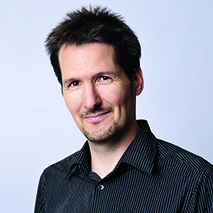Are hydrogen-powered cars ready to hit the market?
Claudia Fried, head of communications at Clean Energy Partnership (CEP), and Michael Müller-Görnert, in charge of transport policy at the Transport Club of Germany (VCD), discuss the question.
PRO: CLAUDIA FRIED
 © CEP
© CEP
Using hydrogen has a number of benefits: fuel cell vehicles are highly efficient, they can be refuelled in a few minutes and have a range of up to 700 kilometres per tank. The hydrogen in the fuel cell is converted into electricity, which in turn drives an electric motor. If the hydrogen is generated from renewable sources, the car does not release any harmful emissions from the exhaust pipe – only water vapour.
The Clean Energy Partnership (CEP), Europe’s largest pilot project for hydrogen and fuel cell mobility, is currently testing around 100 of these fuel cell vehicles in Germany. In total, these vehicles have travelled more than 3 million kilometres and have proven their suitability for everyday use. The customers taking advantage of this pilot scheme appreciate the fact that hydrogen cars are environmentally friendly, and almost as easy to drive as conventional cars. The cars are reliable, quiet and nippy and therefore offer a high level of convenience. Costs for fuel cell technology have gone down considerably, dropping by 90% since 2007.
Carmakers form alliances
The world’s largest carmakers are working together, and costs will continue to fall as a result. BMW is cooperating with Toyota; Daimler, Ford and Renault are working together, and so are GM and Honda. The first mass-produced fuel cell car, the Toyota Mirai, will be launched in September 2015 in Germany. Honda plans to introduce a mainstream fuel cell car in September 2016, Daimler will follow suit in 2017.
Setting up a network of filling stations
So, yes, hydrogen cars are ready to hit the market. If we want demand to be high, we need a dense network of filling stations. Hydrogen filling stations already exist in Germany’s big cities. Industry and policymakers are currently working on a network of 50 filling stations in Germany to meet basic demand by 2016. The number is to rise to 400 by 2023. And our neighbouring countries are also setting up hydrogen infrastructure. The decisions we are taking now will pave the way for making hydrogen vehicles a success in the future. Industry and policymakers have to remain committed and work hand-in-hand with one another.
Claudia Fried is head of communications at the Clean Energy Partnership (CEP)
CONTRA: MICHAEL MÜLLER-GÖRNERT
 © VCD
© VCD
Let me first of all say that fuel cells are a refined piece of technology. They don’t release any harmful emissions – the only thing to come out of the exhaust pipe being water vapour. Thus, they meet all the criteria to serve as an alternative to combustion engines. Toyota and Hyundai are even launching the first two mass-produced fuel cell cars before the end of the year. They are showing that hydrogen technology is ready to enter the car market. However, market readiness is not the most important concern. There are two questions that are more pressing:
Do we have the infrastructure in place?
People who need to use their car on a regular basis want to know whether hydrogen cars are suitable for everyday use. For fuel cell cars in Germany the answer is currently "no". Today, there are only 19 hydrogen filling stations. Industry is planning to join forces with the Federal Government to expand the network to around 400 filling stations across Germany by 2023. However, it is unclear whether this plan can really be put into practice. The Federal Government is also currently working on expanding the charging infrastructure for electric vehicles, and it is debatable whether they can do both at the same time. So what is the priority? Are policymakers putting their horses on electric or fuel cell vehicles to decarbonise the transport sector – a vision promoted by no other than Angela Merkel at the G7 summit at Schloss Elmau?
Which system is more effective for combatting climate change?
It is true that the conversion of hydrogen into electricity in the fuel cell is a clean process. However, a lot of energy goes into the production of hydrogen. This must not be overlooked when assessing the environmental impact of fuel cell cars. If we base our assessment on Germany’s current electricity mix, fuel cells lag behind efficient gas and diesel cars in terms of their environmental impact.
If we want to improve the environmental impact of motorised vehicles, we need a successful energy transition. The use of electric and fuel cell vehicles only makes sense if 100 per cent of the electricity comes from renewable sources. However, it is unclear as for when we will have enough renewable electricity available for producing the hydrogen. Not only does the hydrogen/fuel system require a lot of energy in general, but compared to the direct use of electricity in electric motors, around half of its energy is lost. Thus, the direct use of electricity in electric cars is far more efficient.
Michael Müller-Görnert is in charge of transport policy at the Transport Club of Germany (VCD)

